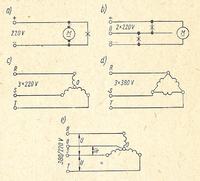Hello.
Quote: Let's skip the topic of this reset because you are an electrician, probably from the "communist" years
And even longer

Quote: only that during the 3 years of study, no one mentioned what it used to be called.
Probably also young

As for the lack of education - fact. I am learning the Sorok three days and I still do not know enough.
PS. I thought I was up to date, and here zonk - a dinosaur.
(Good thing I didn't get wrinkled or limped: roll :)
lordpakernik wrote: used to be differently taught now we still have PEN, PE and N. So I assume it was a PEN conductor.
Finally, I have to finish off the respondent (I can't resist the temptation). Zero could not be performed on a network with a phase-to-phase voltage of 220V,
and both phases went to the apartment. Fuses on both cables.
Here you have a problem to figure out (with your professor)





